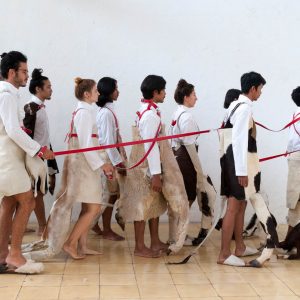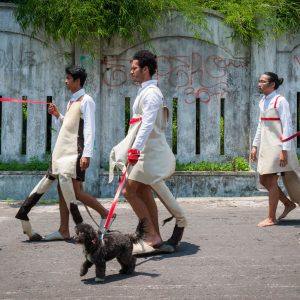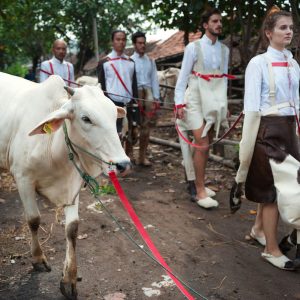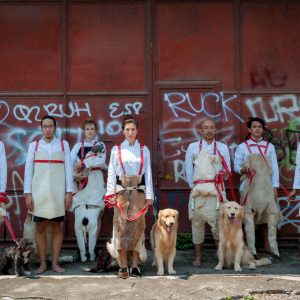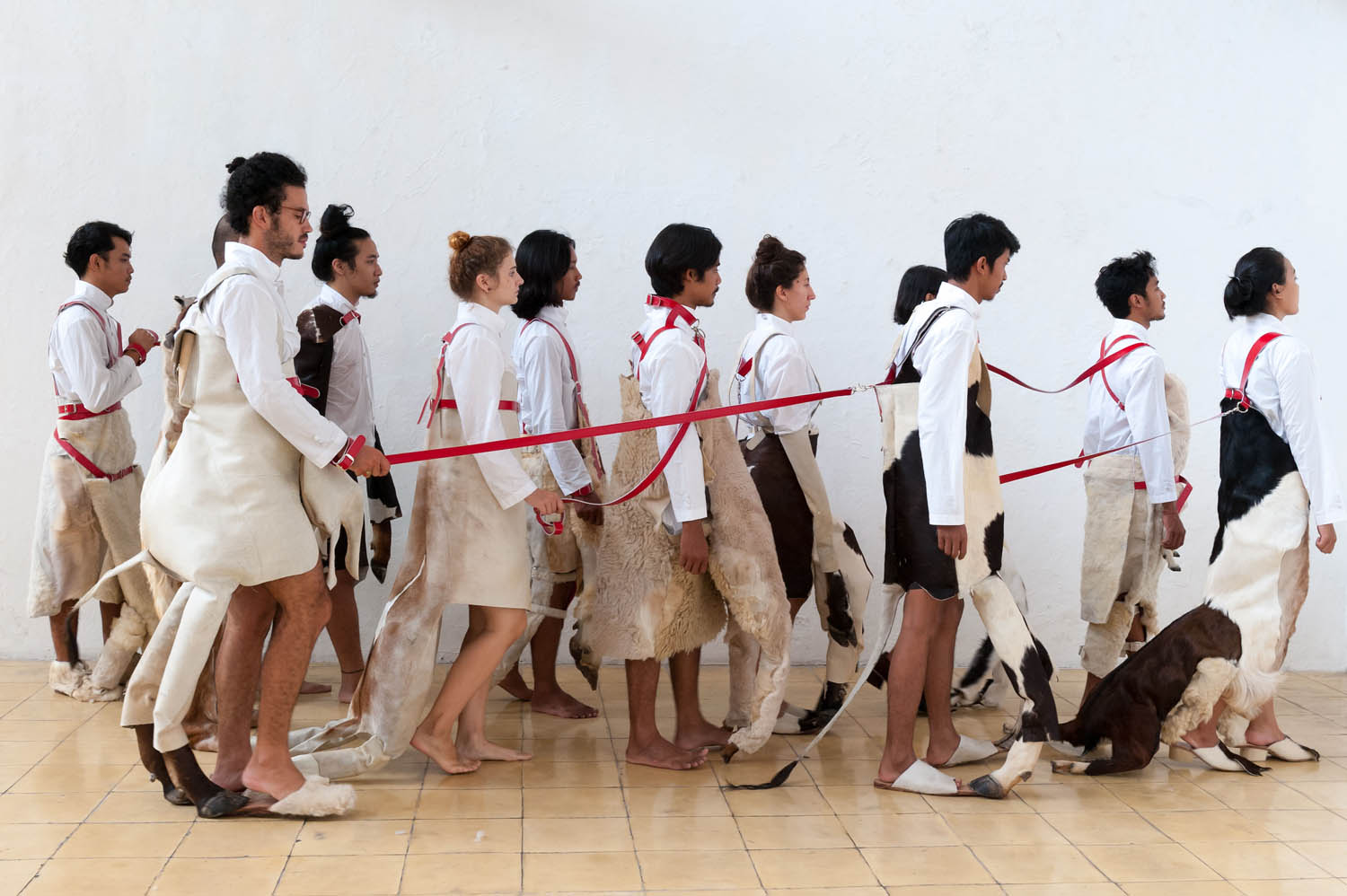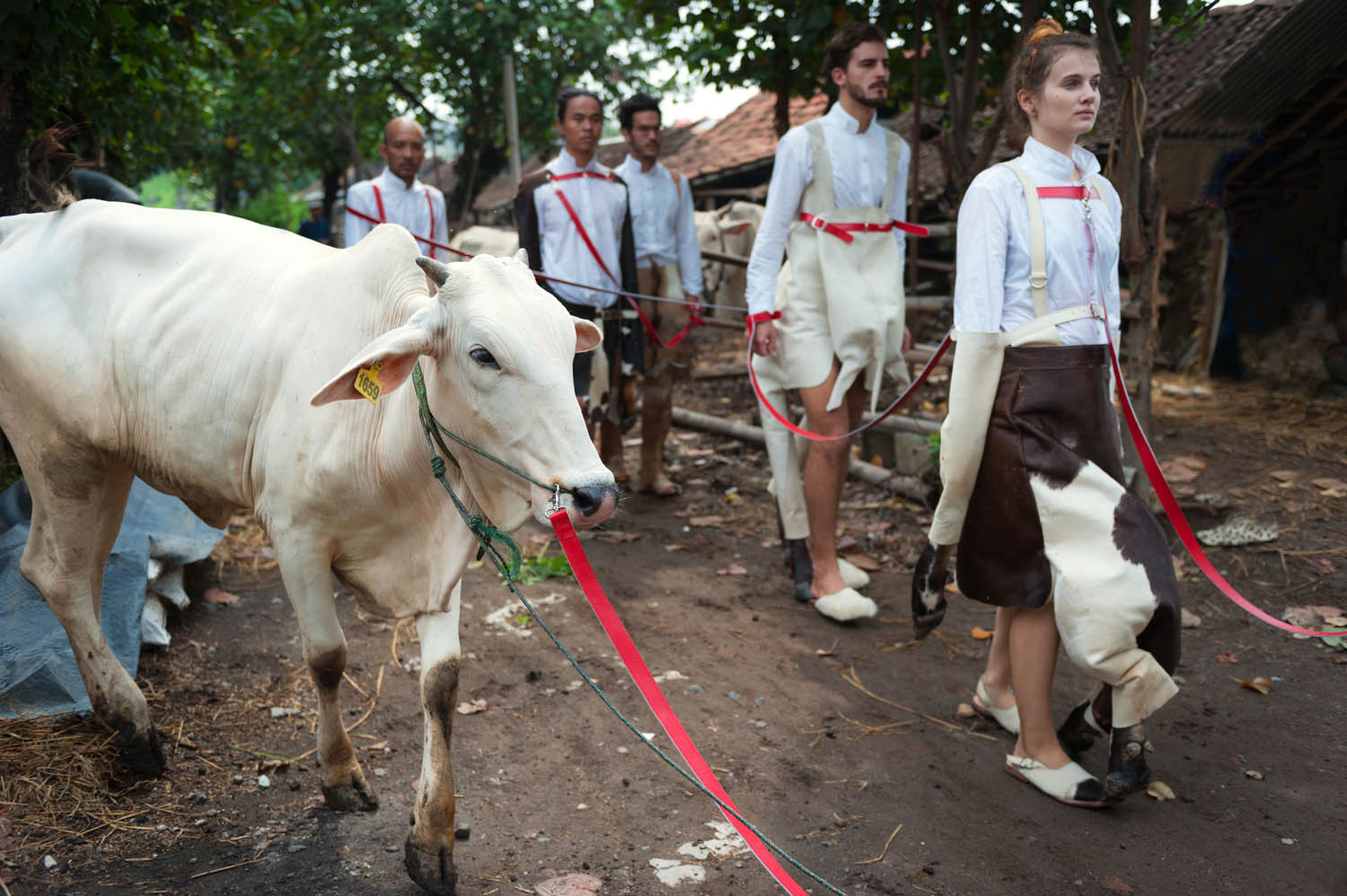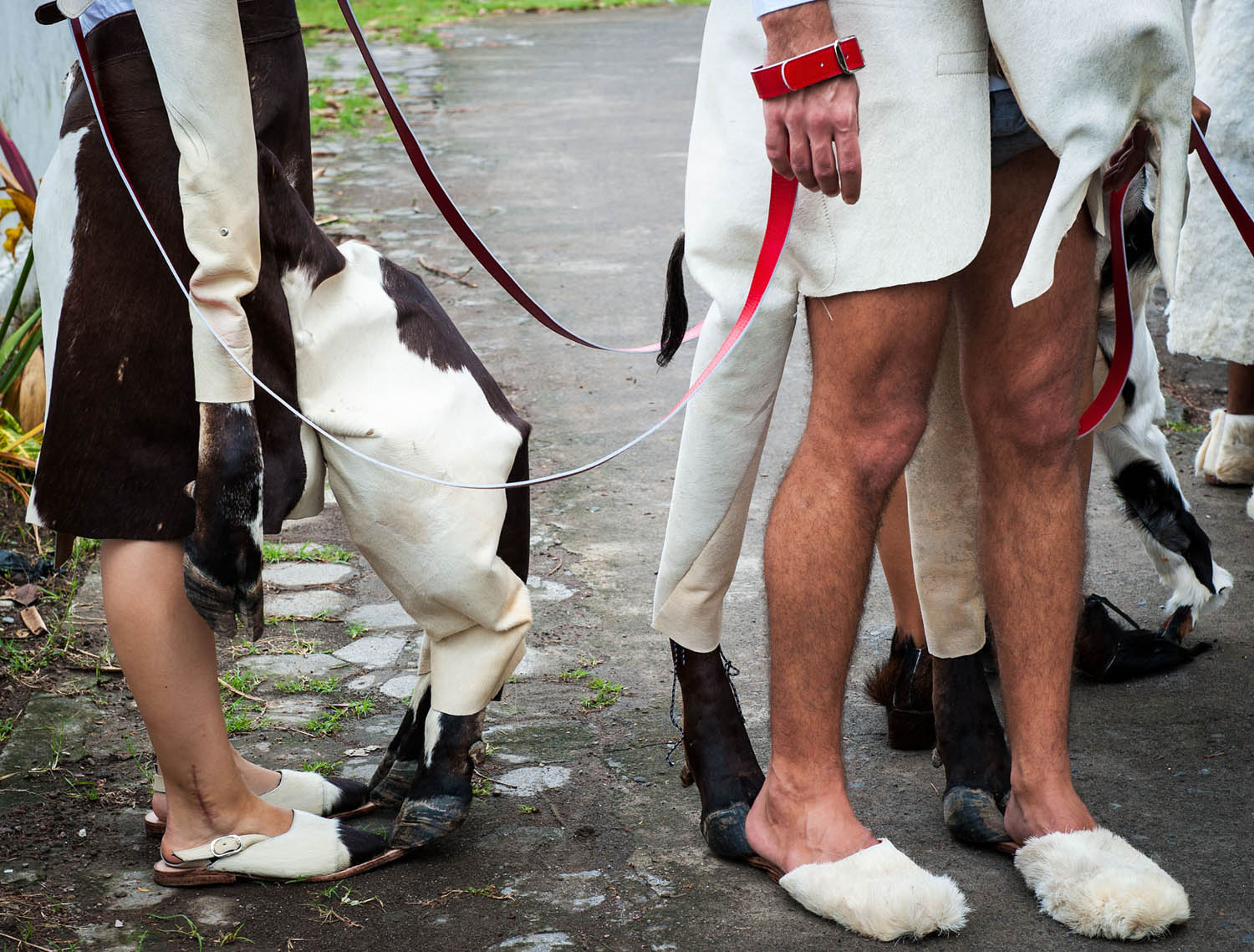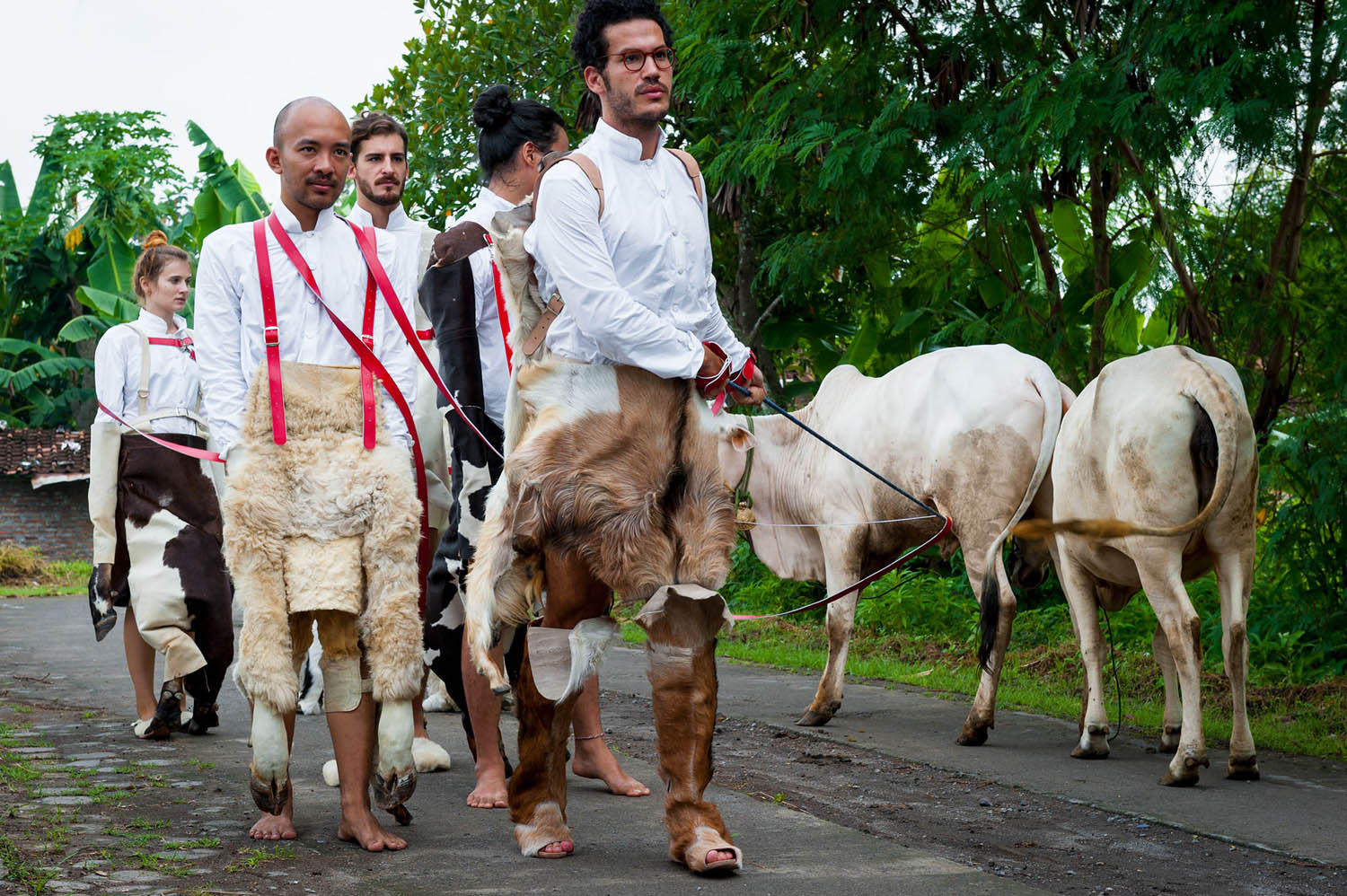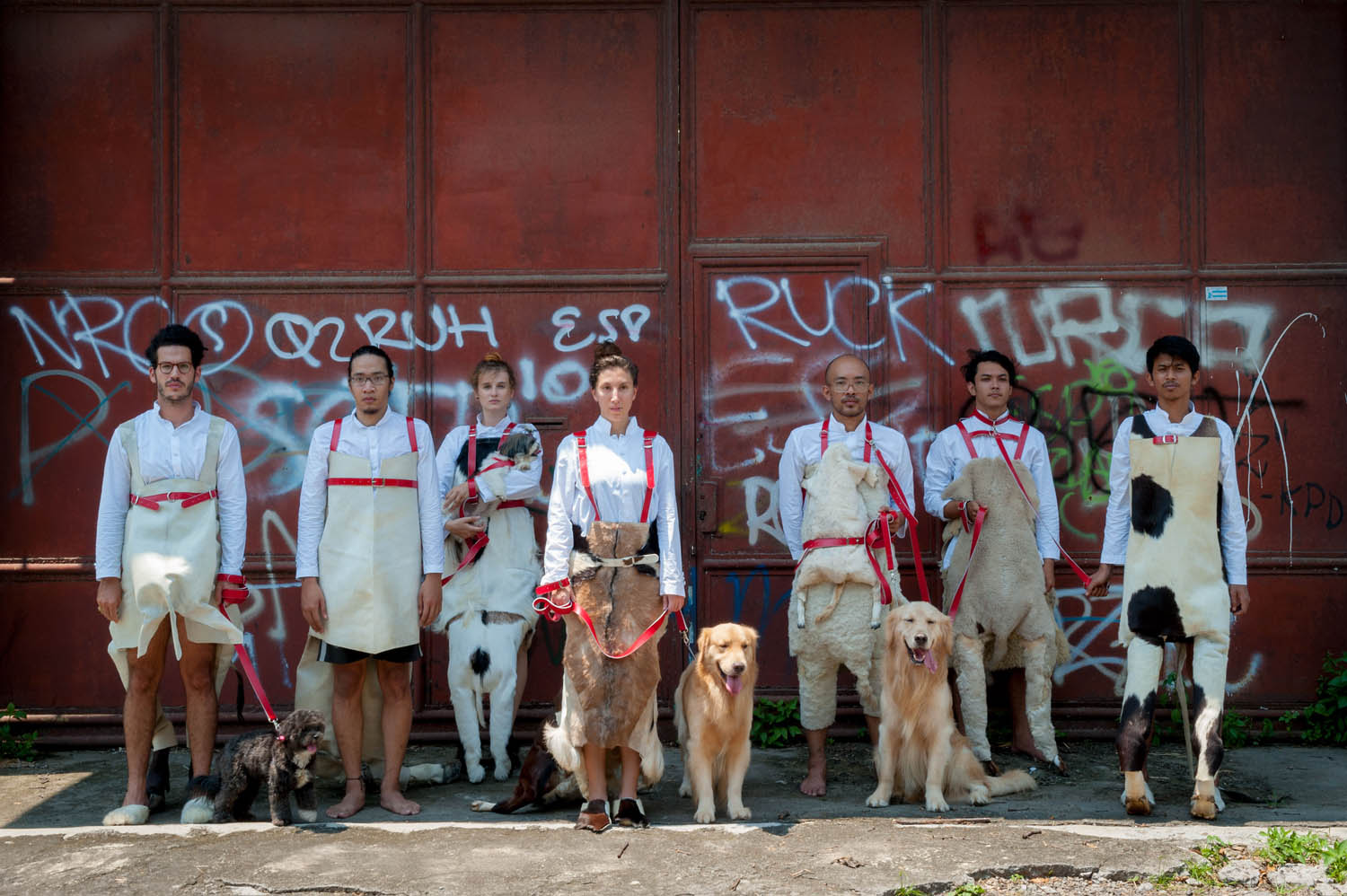Through my work I try to understand how we as humans perceive different aspects of life. In this digital global era, where each year more people experience their life in urban settings, nature and relation to nature gets alienated. The physical relationship between humans and animals is no longer obvious in its daily need for survival and spiritual guidance. The DogWalk is meant more as a reminder, that we cannot live without these physical relationships (human-human, human-animal). It is essential for our wellbeing now and in the future and we have to be aware of these relationships in order not to become detached from our basic human needs.
I created this work for the Sydney Biennale, an alternative “Dogwalk” as a fashion parade and a parody on the catwalk.
We live in a world in which we need to be challenged constantly and fed with new things in order to make us feel alive. In areas such as technology, design and fashion – we crave new ideas, fast – new options, ideas and innovations. Tendencies of rapid consumption of objects and ideas require constant change and adaptation. Increasingly, we need to be alert, responsive and creative. I am interested in looking at the origin of these forces of change and adaptation, in particular the role of the ‘trickster’, or the rogue who through cunning deception and an attitude of disobedience can shape new possibilities and potential.
The ‘Trickster’
If we look to ancient stories and mythologies, it was believed that deities in the form of tricksters were often shaping and influencing change. Tricksters bring about transformations in the things around us through their disobedience of conventions, a cunning attitude and/ or through their powers of manipulation. The ‘trickster’ can use this power to take part in the creation of humanity and bring change in the world as a result of their disregard for law and order. The role of the hero and the trickster are close, blending bravery and trickery. Tricksters are often associated with phenomena that are transient or unstable.
Human/ Animal relations
The mythology of the trickster often takes the form of animals, as they travel between worlds of humans and gods. By playing tricks on humans they see life as a parody by doing things in a contrary fashion. They create chaos, in order to make space for new ideas, innovations and inventions. I am interested in the bond between humans and animals, how we live with them, the power relations and the idea that animals can indeed become part of us. The dog and cow in particular become a symbol of this relationship and ideas of obedience and disobedience. These costumes are made of cow, sheep and goat leather, sacrificed-animals during the Eid al-Adha or the “Sacrifice Feast” in Indonesia.
Animism
The strength of animism in Indonesian daily life is declining due to religious dominance and globalism. I looked into the collection of Indonesian textiles in the Art Gallery of NSW, in particular the Ikat textiles from Sumba demonstrate these patterns in human/animal relations. Much of the population of Sumba still holds to the Marapu animist belief system of ancestral worship. Whilst the East and the West of Sumba Island contains many diverse tribes, Sumba society is still bound in connection via the mythological ancestor in the form of a python that has bound the island together. The story of this is written in the weavings of Sumba.
I particularly like the Ikat tradition and technique, and am inspired by its philosophies. Ikat means ‘binding’, and I like this idea of binding and dyeing and creating negative and positive images – and the potential this has in terms of the meaning embedded in their imagery.
I seek to combine Ikat and imagery of the medium; fabric bundles, robes, bands and binding with the idea of dogs on leashes as an example of animal to human relationships in particular of obedience and disobedience and the projection of the trickster archetype upon societal relations, innovations and adaptations.
